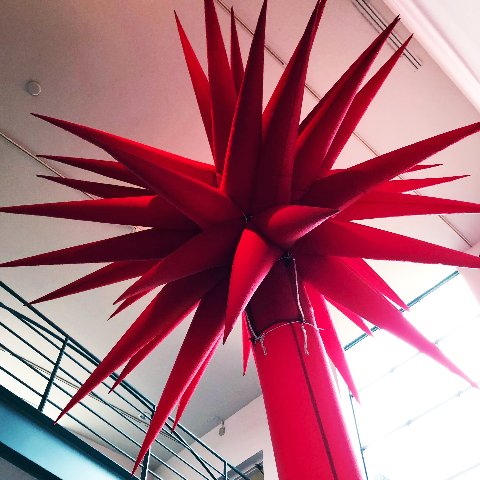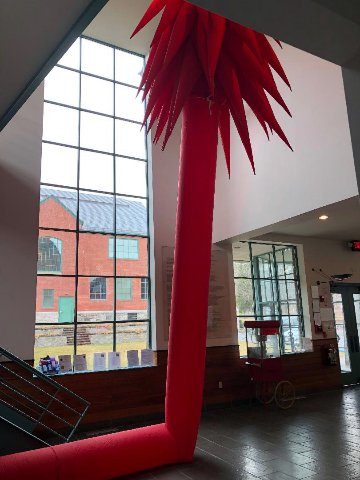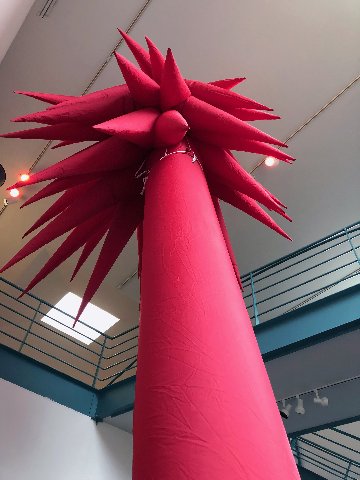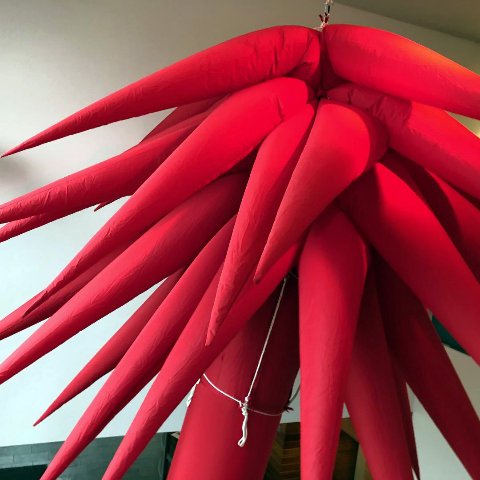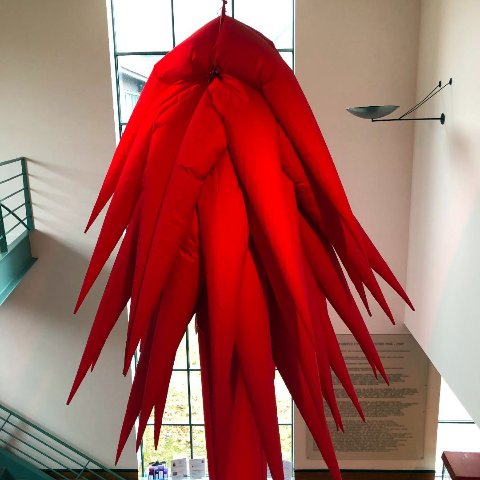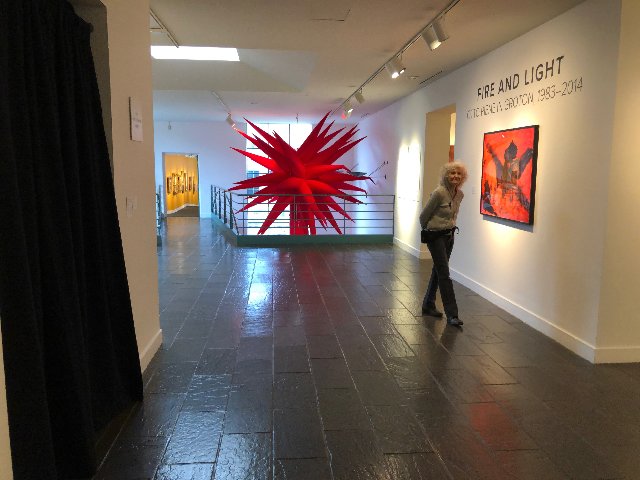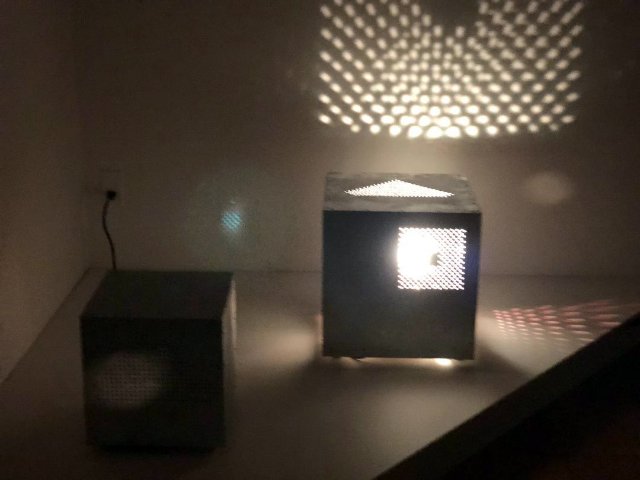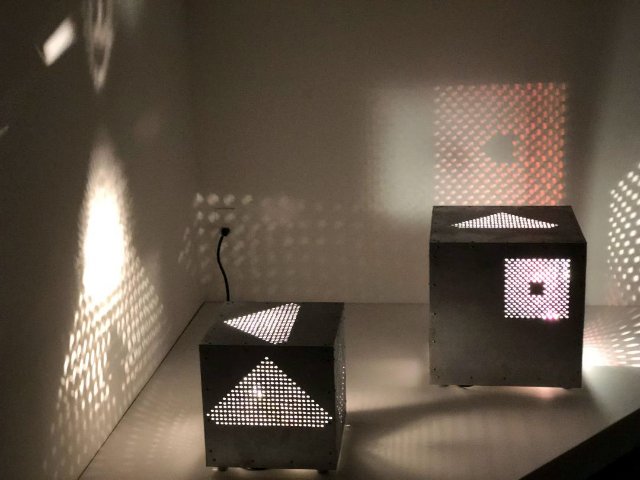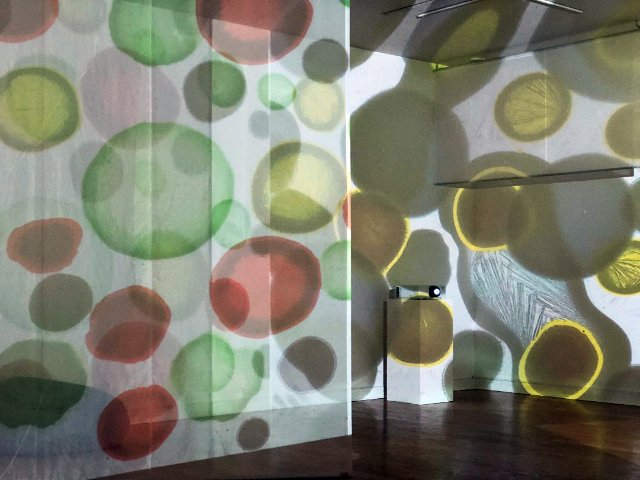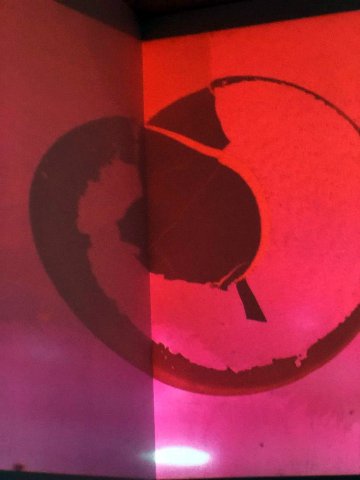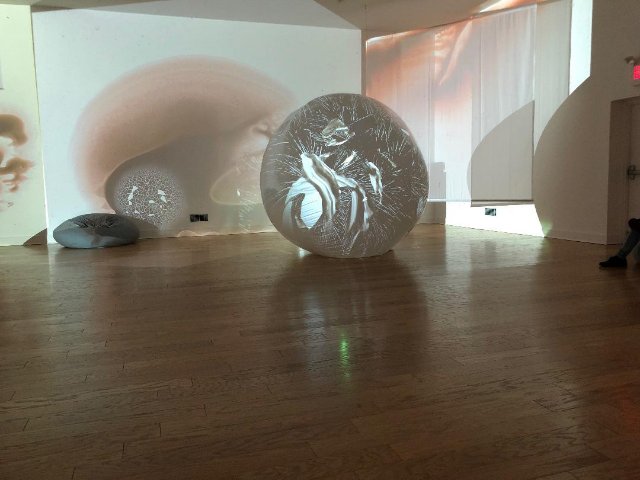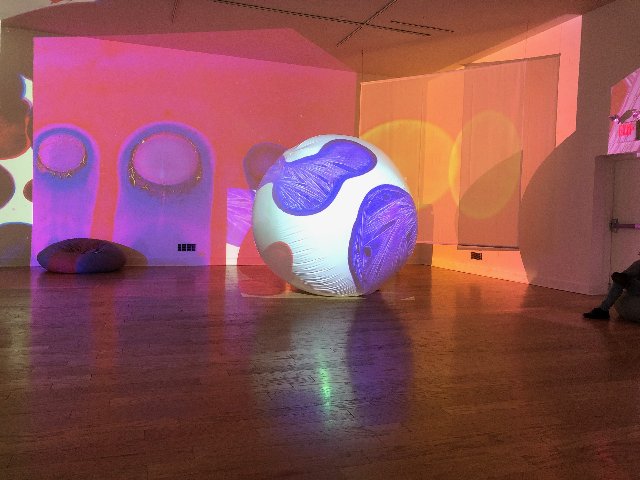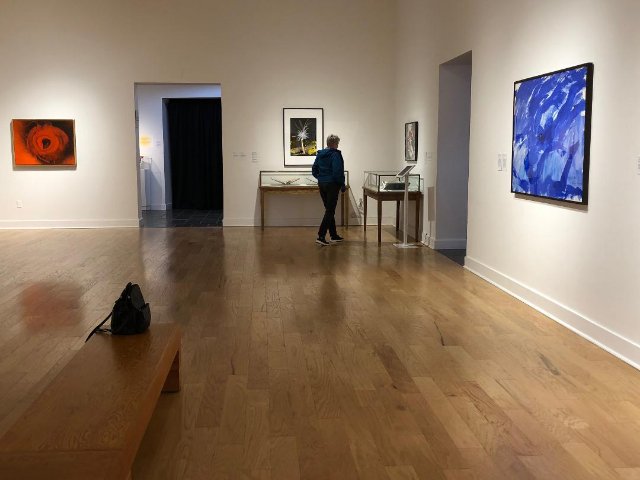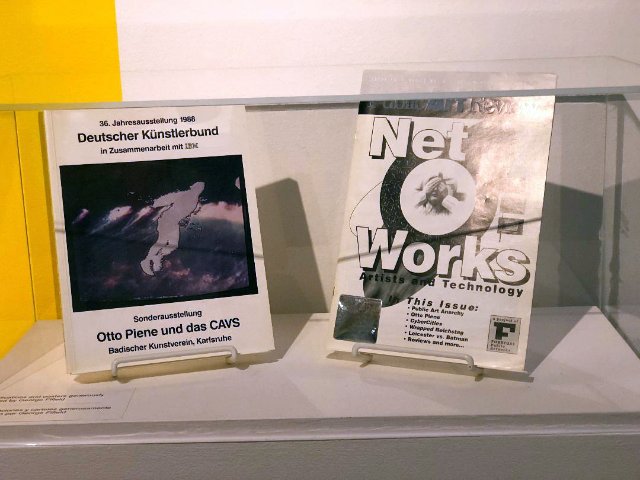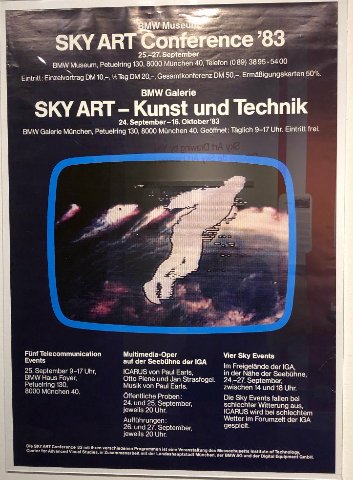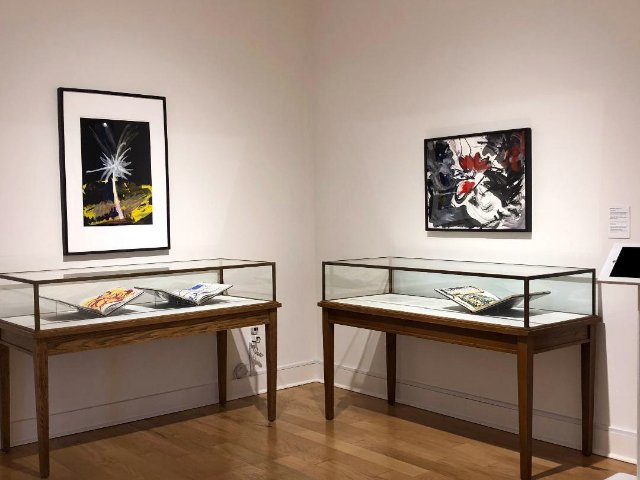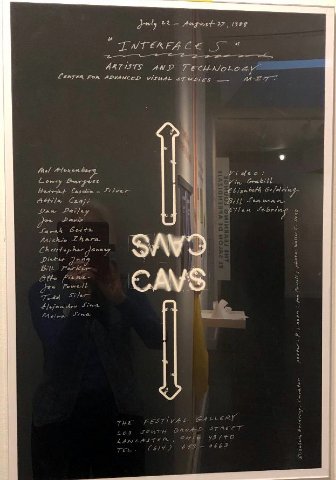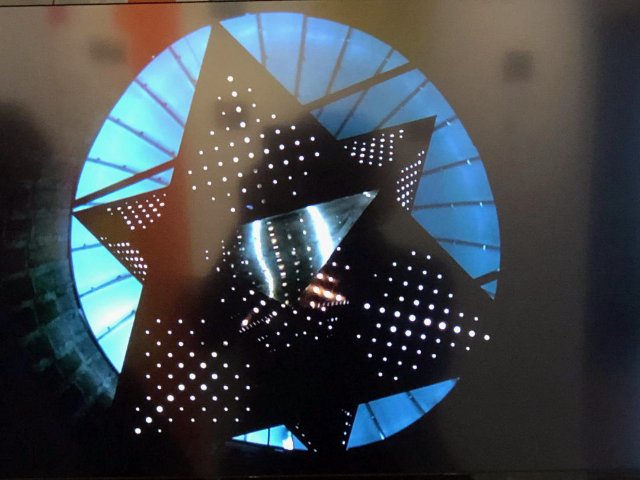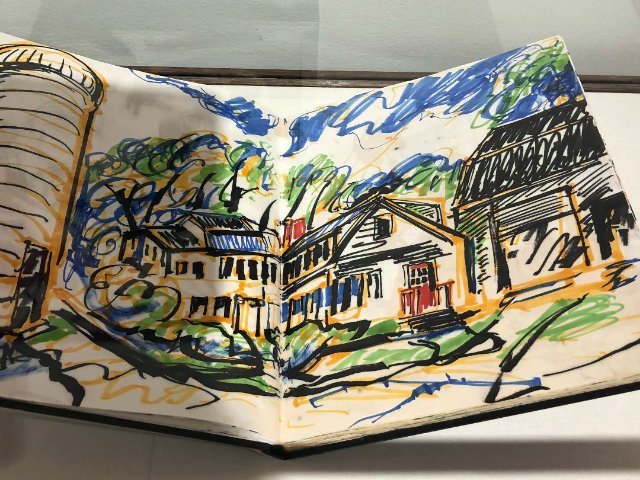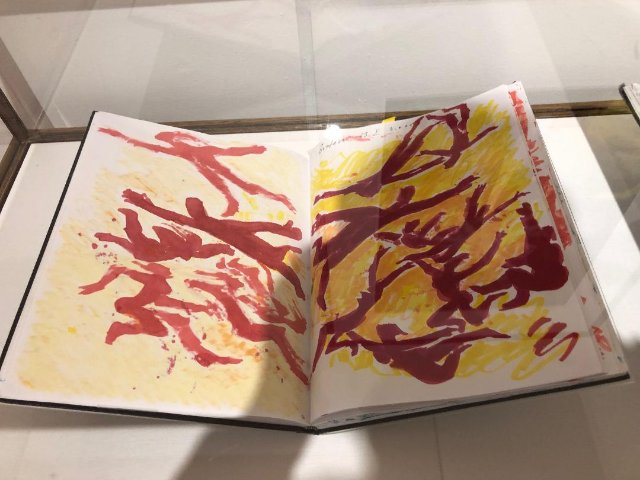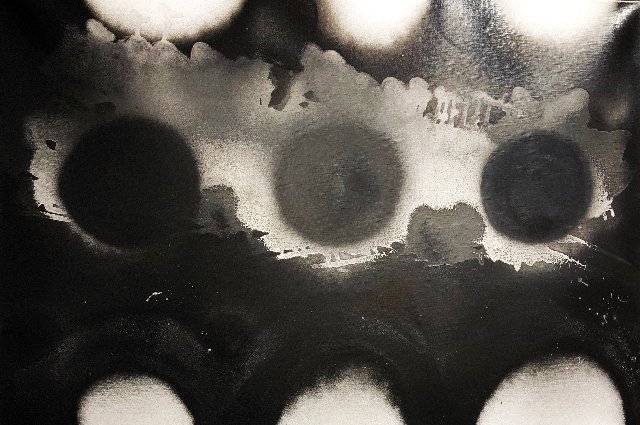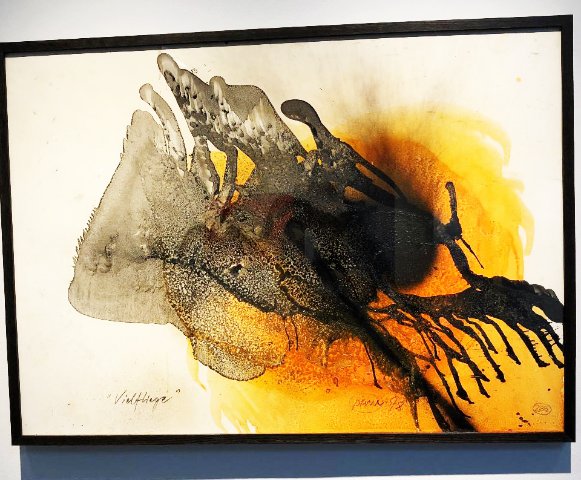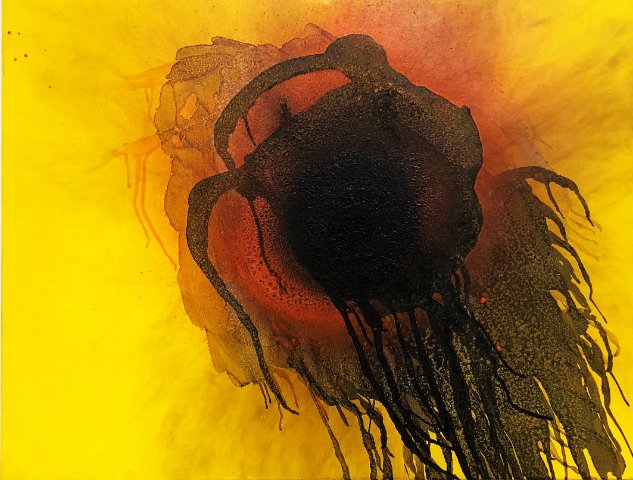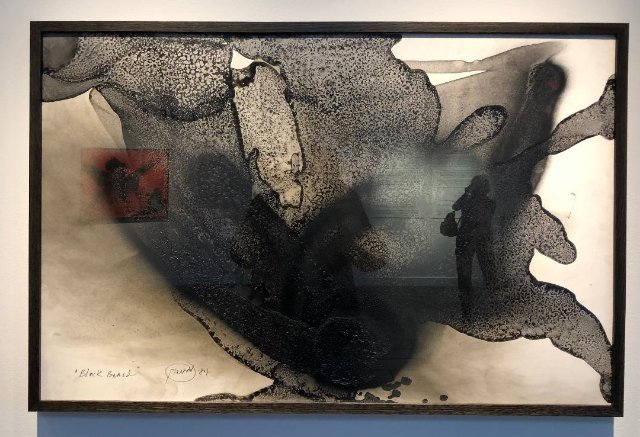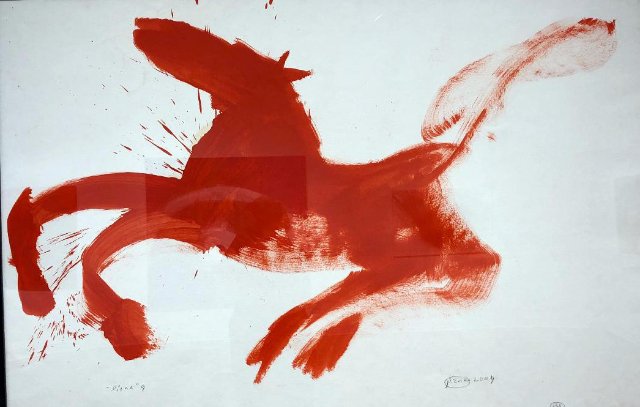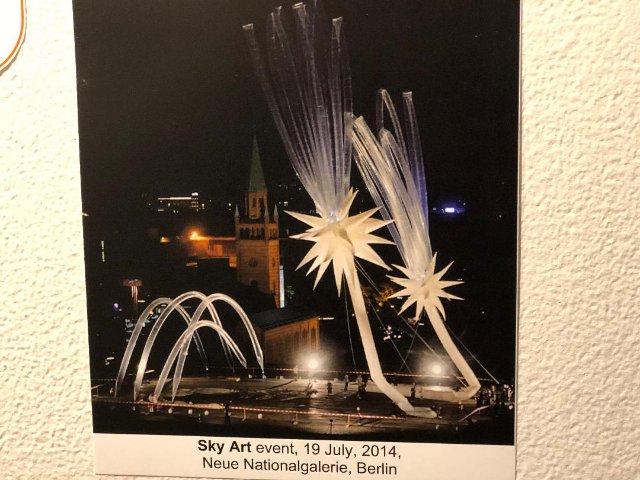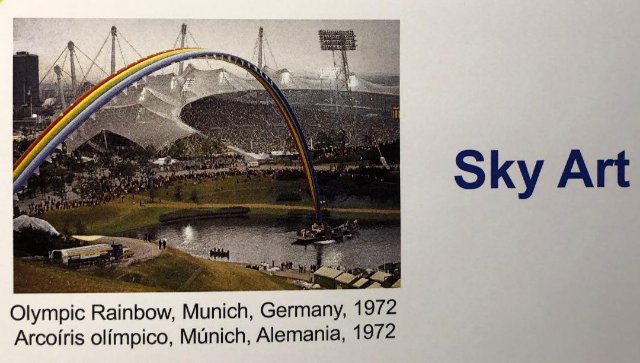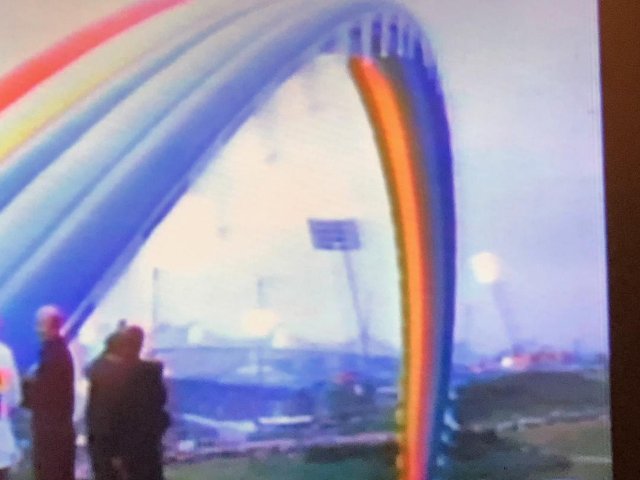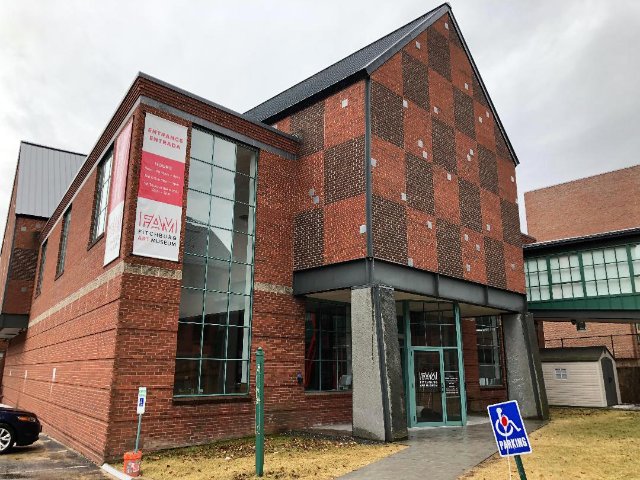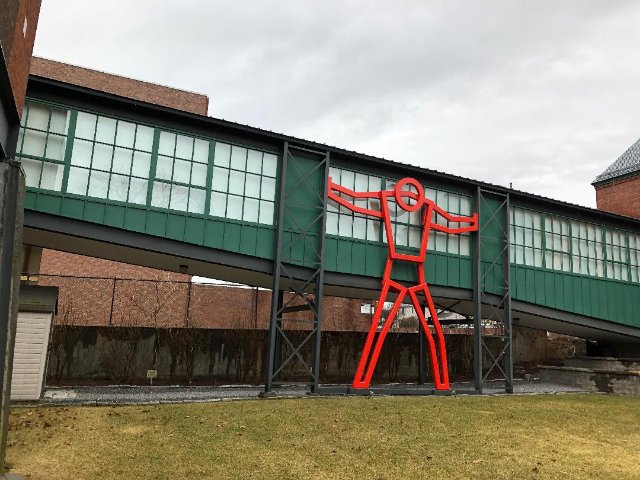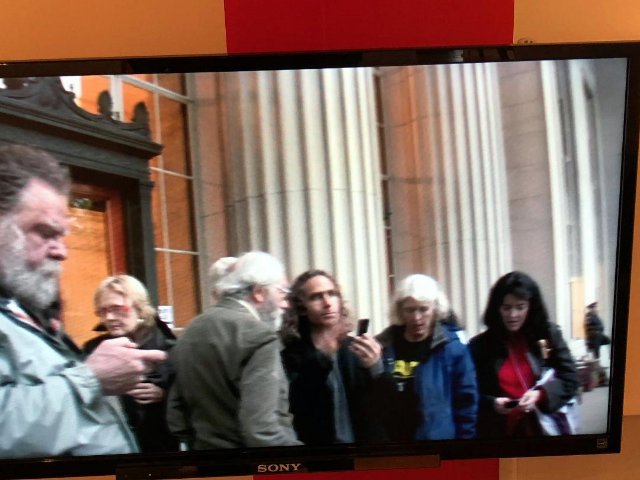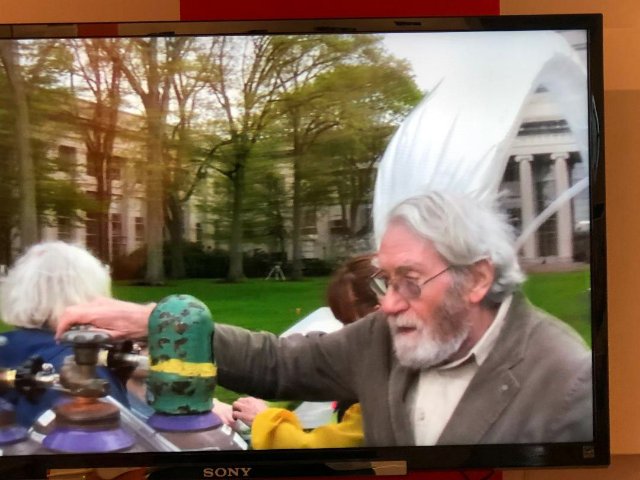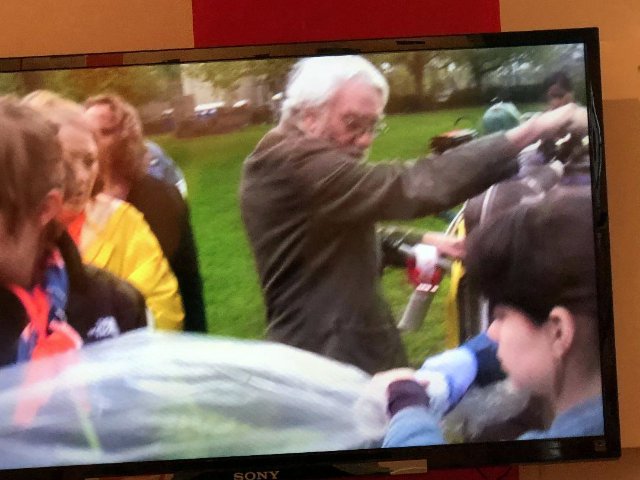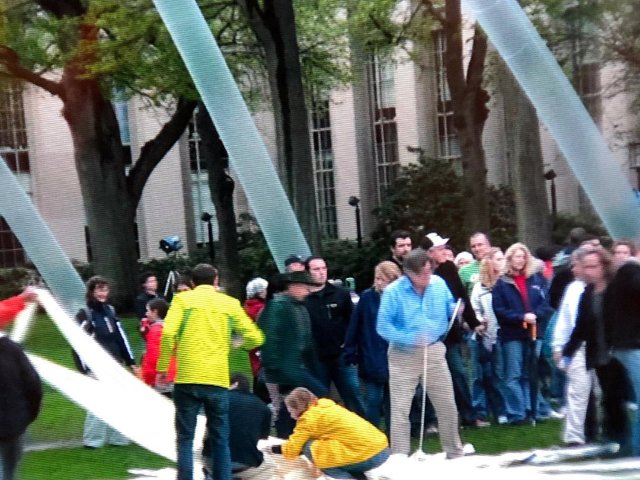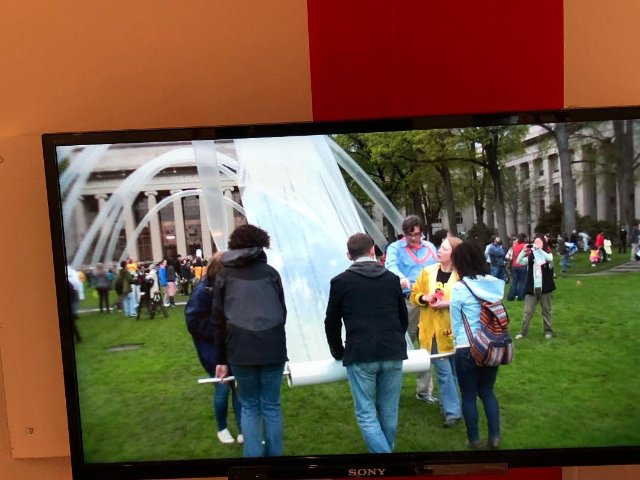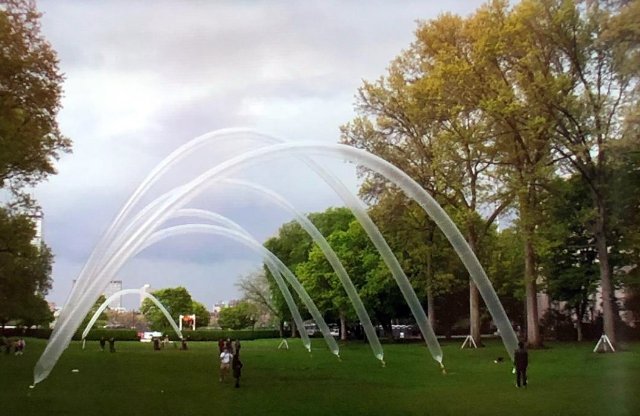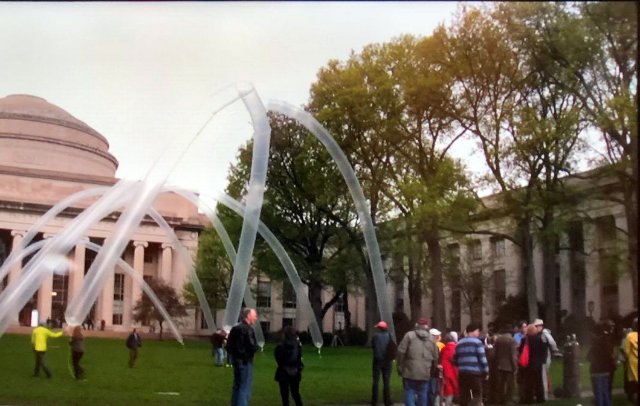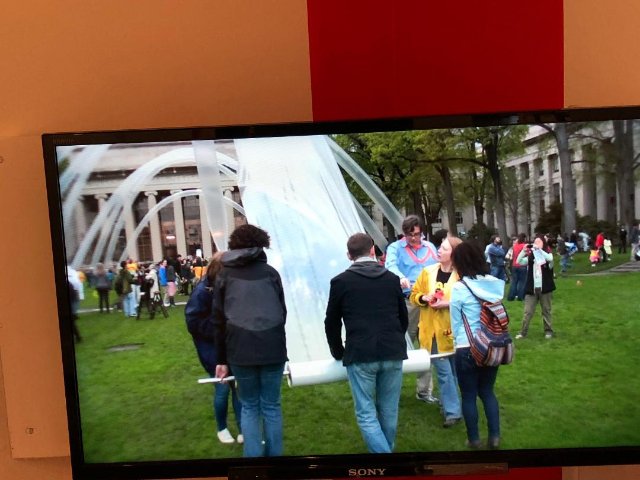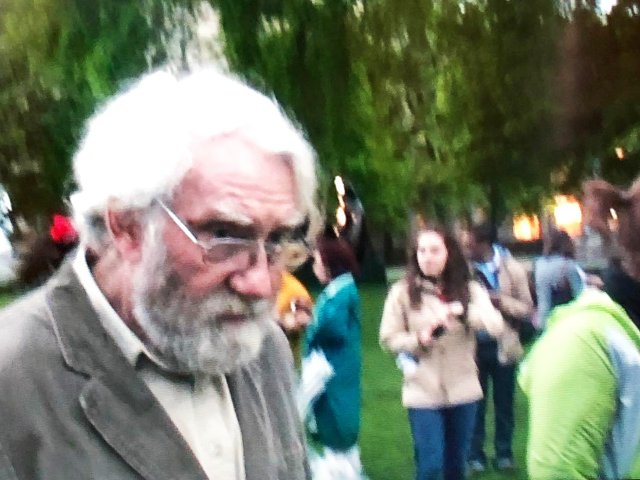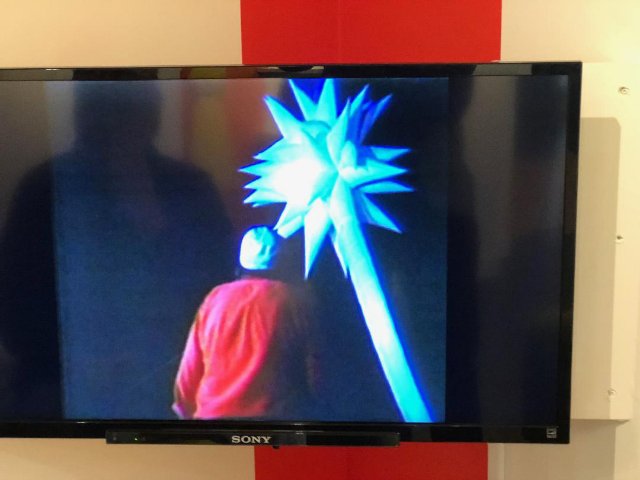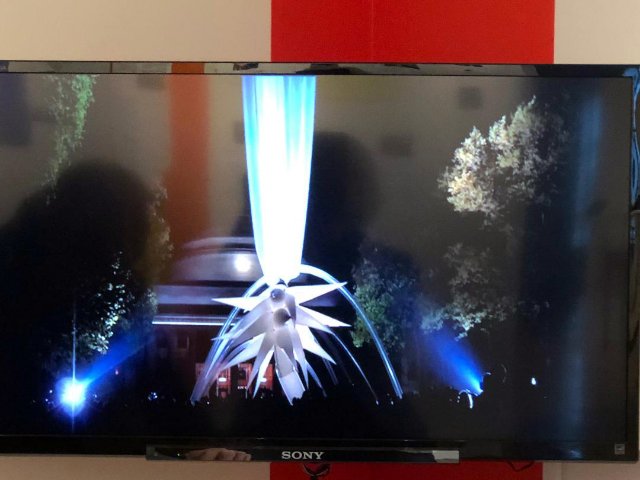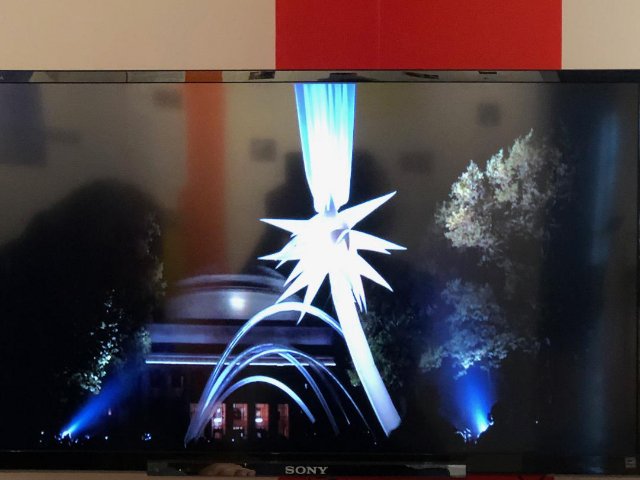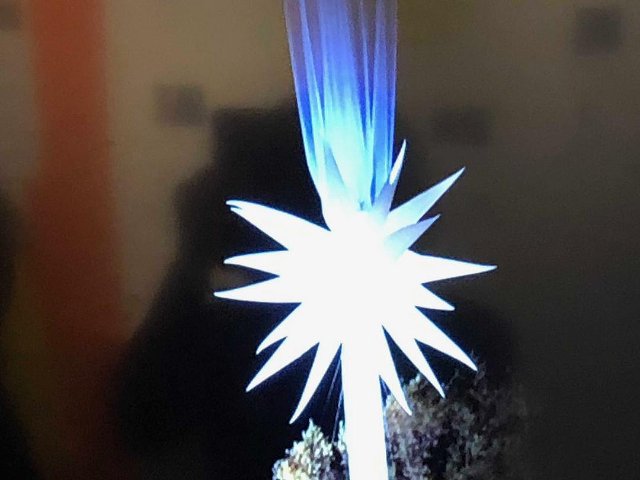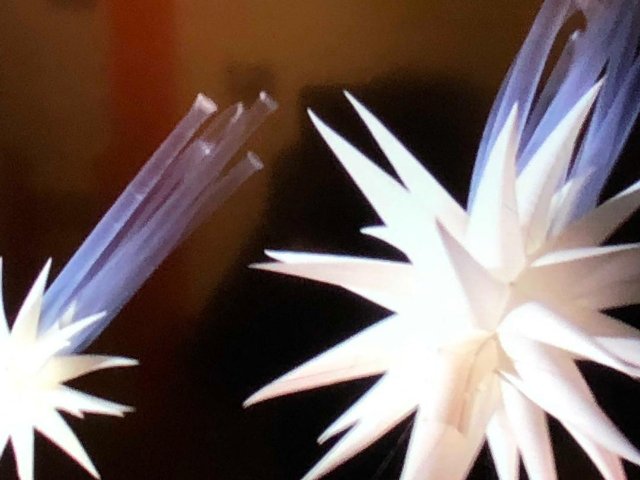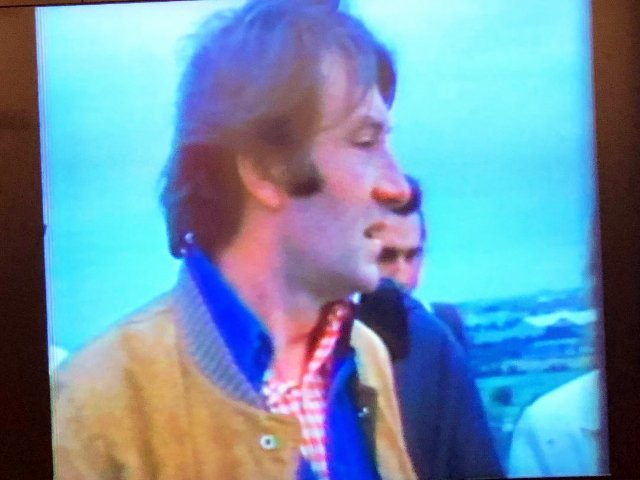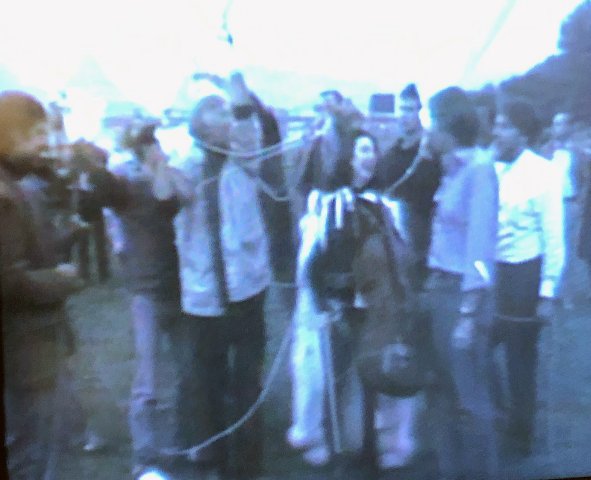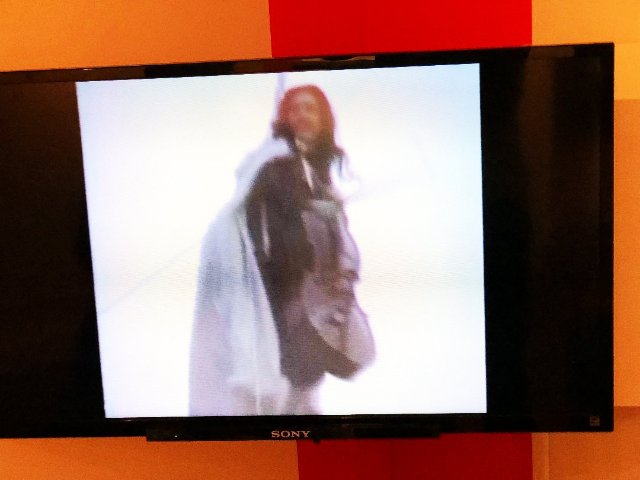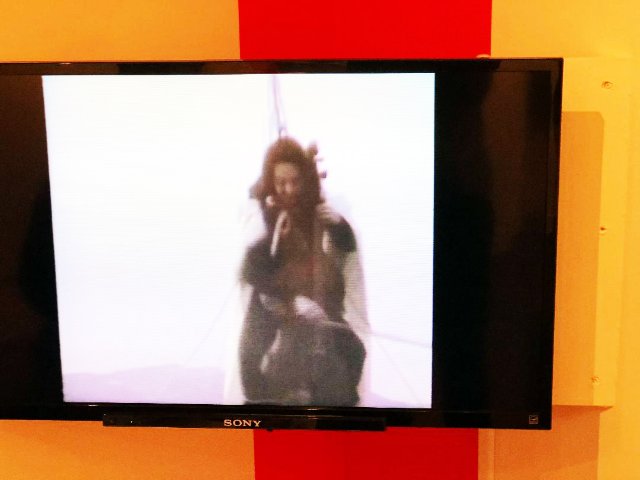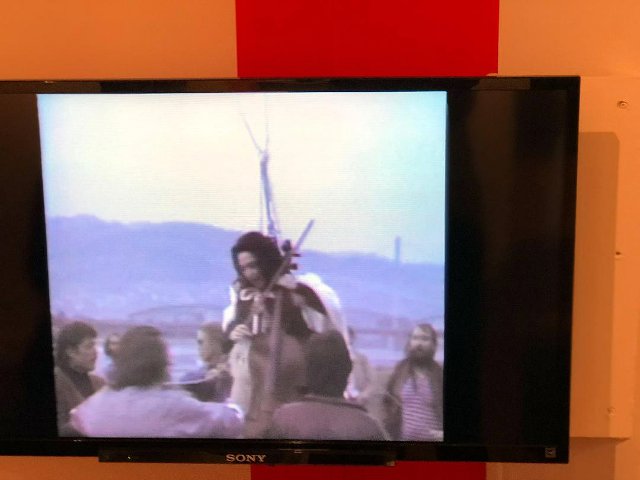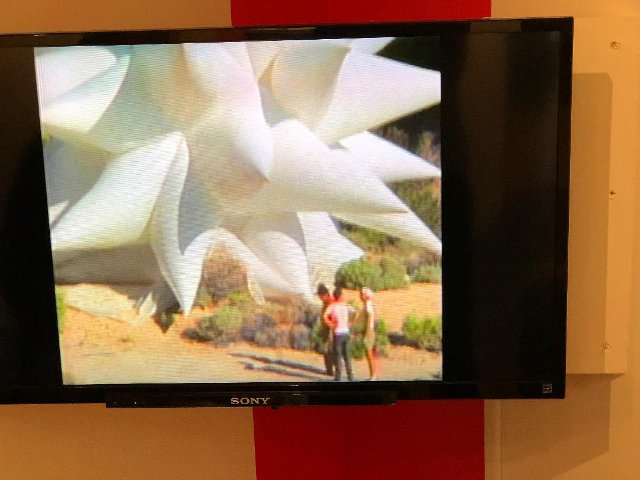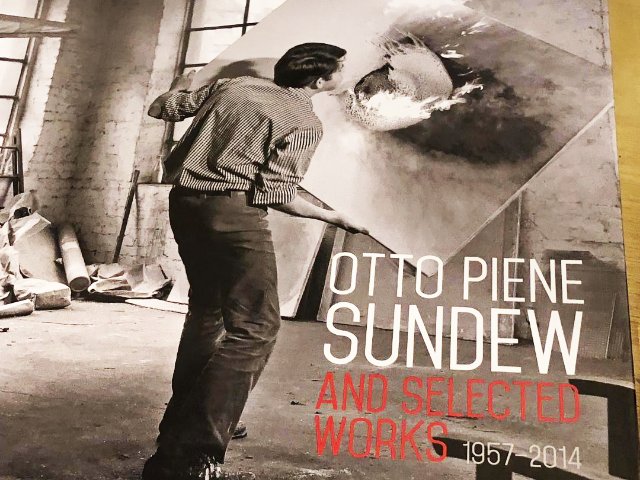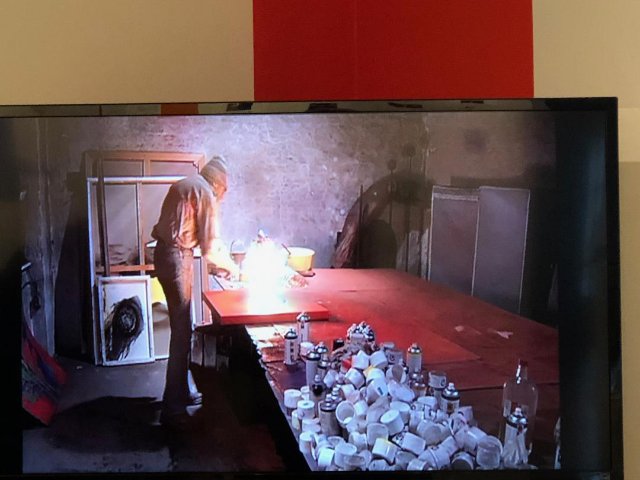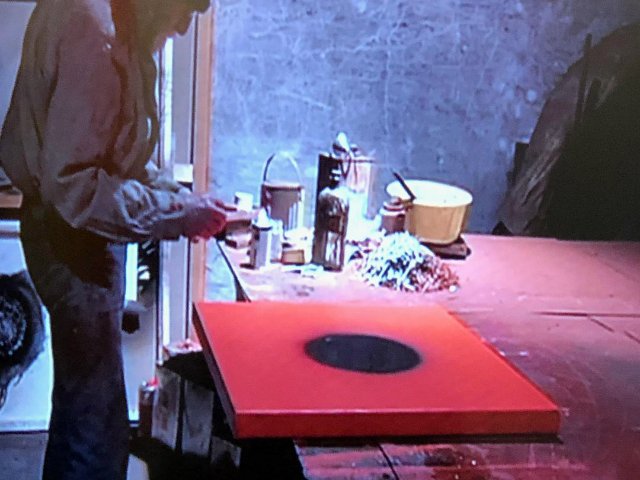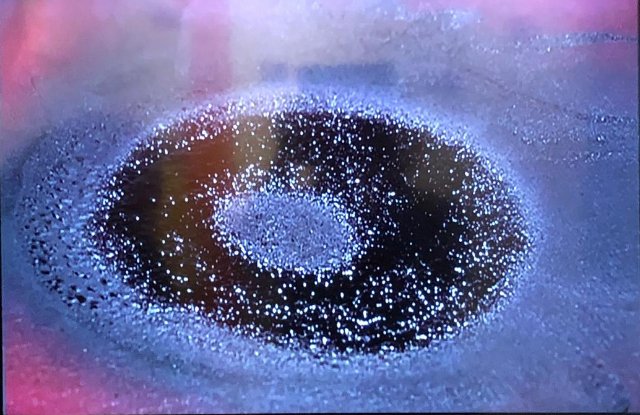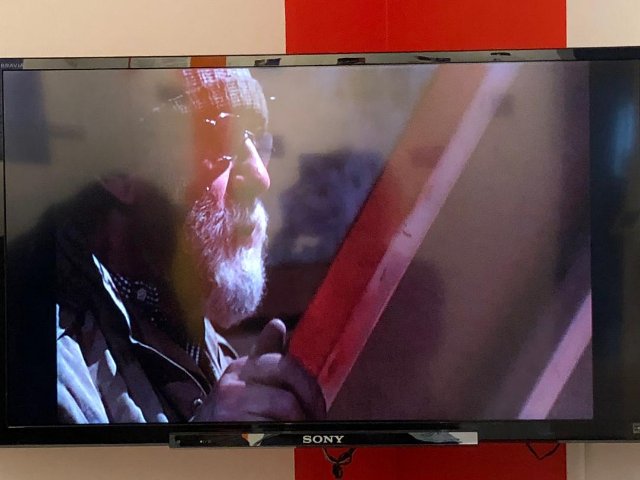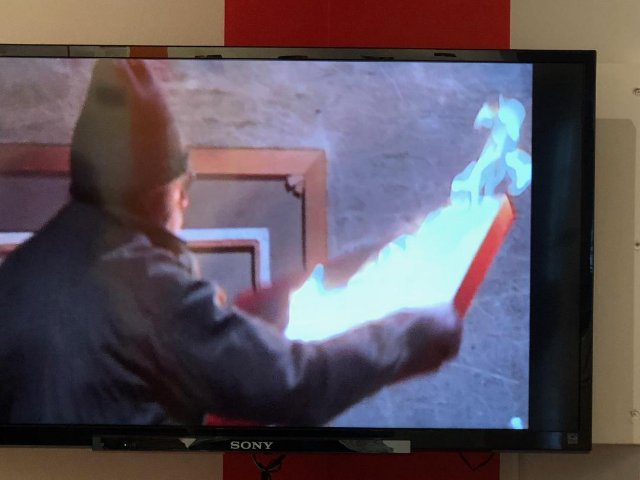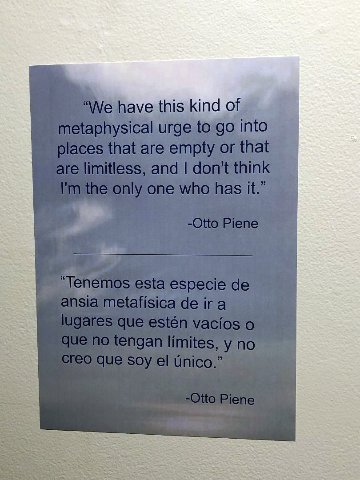Otto Piene at Fitchburg Art Museum
Fire and Light: Otto Piene in Groton, 1983-2014
By: Astrid Hiemer - Apr 14, 2019
The current exhibition, Fire and Light: Otto Piene in Groton, 1983-2014, at the Fitchburg Art Museum (FAM) in Massachusetts will remain on view until June 2nd.
When entering the museum lobby one encounters right away a Piene red inflatable sculpture, which inflates, then deflates via an air blower. Actually, visible is the two story tall neck of the sculpture. It fills the area of a staircase that is leading to the upper exhibition floor.
There, in a corner hovers the immense Red Star sculpture (2014), showing visitors its full fury and then receding its volume until the next round of inflation. No matter how often I have seen any number of Piene’s Inflatables indoors or outside in many locations, powered by hot air or lifted into the sky with plastic tubing and helium - it’s always a thrill and beauty to experience!
This exhibition includes two installation spaces: Proliferation of the Sun goes back to 1968/69 and was reinstalled and updated at the Neue Nationalgallerie in Berlin, Germany, in 2014. (Piene died at age 83 days after the Opening in Berlin, while he was on the way to make final arrangements for an open air Inflatables Event - probably his most beloved art and public activity.)
At FAM Proliferation of the Sun takes up a large gallery space, allowing breathing room for different components. They include hanging scrims and a sizeable white, round plastic floor sculpture with markings that temporarily resembled an eye. Many of the colorful notations are circular images in various sizes. Originally, Piene had painted more that one thousand glass slides, which would project images via several slide projectors. Today, fully digitized, they move along the gallery walls according to a continuous 35-minute long multi-media performance. While standing inside this space one gets immersed into forms and colors.
The second installation space is a small, mostly dark gallery, exhibiting two black Light Robots. The tops and sides of the robots are perforated by grids. Internal lights and the turning robots create shadows on the walls that form continuously moving and changing patterns. There is an intimate interplay of dots, light and darkness that permeates the space.
The original inventions also go back to the 1960s. Piene named them Light Ballets and were technically much simpler. In 2013 he started to develop the Light Robots with John Powell. By 2014, shortly before his death, he had seen in the studio a first finished Light Robot; now a spinning and mobile sculpture.
Four videos, lasting from approximately two to 21 minutes invite the viewer to become familiar with Piene’s life, extensive oeuvre and outdoor events at Killian Court, M.I.T., Cambridge, MA, in 2011. They are titled: Otto Piene , Video Tribute, editor Vin Grabill; Sky Event, 2011, at Killian Court, M.I.T by James Manning, two videos; and Otto Piene in Groton, by Ralph Goertz.
At Killian Court, Piene and his crew with many volunteers launched plastic tubing in rainbow forms and inflatable sculptures during daylight and in darkness. The large court space was teeming with onlookers and participants. It was a fantastic and awe-inspiring Sky Art day. (Please view our numerous video stills.)
Piene would design his intended inflatable sculptures. Then, most were constructed by Lees Ruoff and assistants. The sizes and complexities of several Inflatables are double and triple the size, if not more, of Red Star. Some are titled: Carousel, 1976; Grand Rapids Carousel, 1976; Icarus 1979; Hexagonal Rooster, 1983; Sekhvi Rooster, 1987; Minotaur For Icarus – A Sky Opera, 1988.
Further, FAM installed an extensive time-line of the artist’s complex life and oeuvre next to the video corner. A couple of cases show a few of his large sketchbooks. I well remember a stack of these black books in his office, which was growing taller as the years passed. Piene was the Director of the Center for Advanced Visual Studies (CAVS) at M.I.T. from 1974 to 1993, when he retired from teaching and leading the first Art, Science and Technology Center in the USA. Since then, multiple museums, organizations and centers with similar missions have been established on this continent and in Europe.
Of course, some of Piene’s gouaches and paintings are also on view at PAM: Among them - Siena 9, 2004, tempera gouache on paper board; Helldunkel (Bright Dark), 2006/7, oil and fire on canvas; Orbit, 1993/94/97, oil and fire on canvas, Feuerrot (Fire Red), 2002, oil and fire on canvas; and Sulphur, 2001, oil and fire on canvas.
The museum has scheduled a Sky Art Event for Saturday, April 27, 11am-3 pm and has advertised for volunteers to participate. Please contact the museum. And, when you take part, it will be a great experience. On Sunday, June 2nd, a final conversation on closing day: ‘Fire, Light and Protest’ rounds out the last program offer in conjunction with this exhibition.
Please view below direct links to other articles on BFA about Otto Piene and MIT/CAVS.
More Sky!
(As Otto would have said.)
Piene Notebooks donated to Harvard University.
Zero: Countdown to Tomorrow at Guggenheim Museum.
Otto Piene Monograph.

